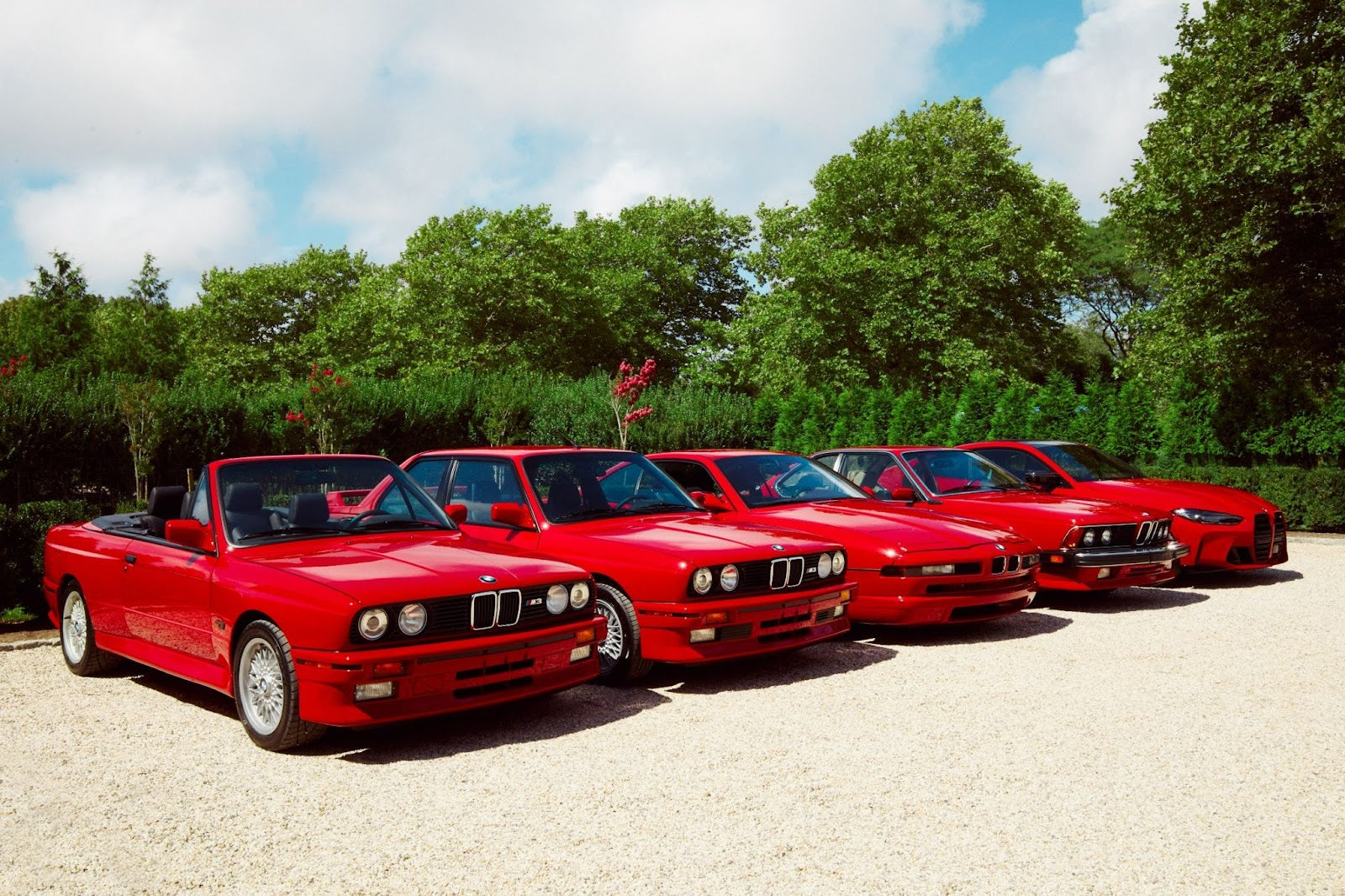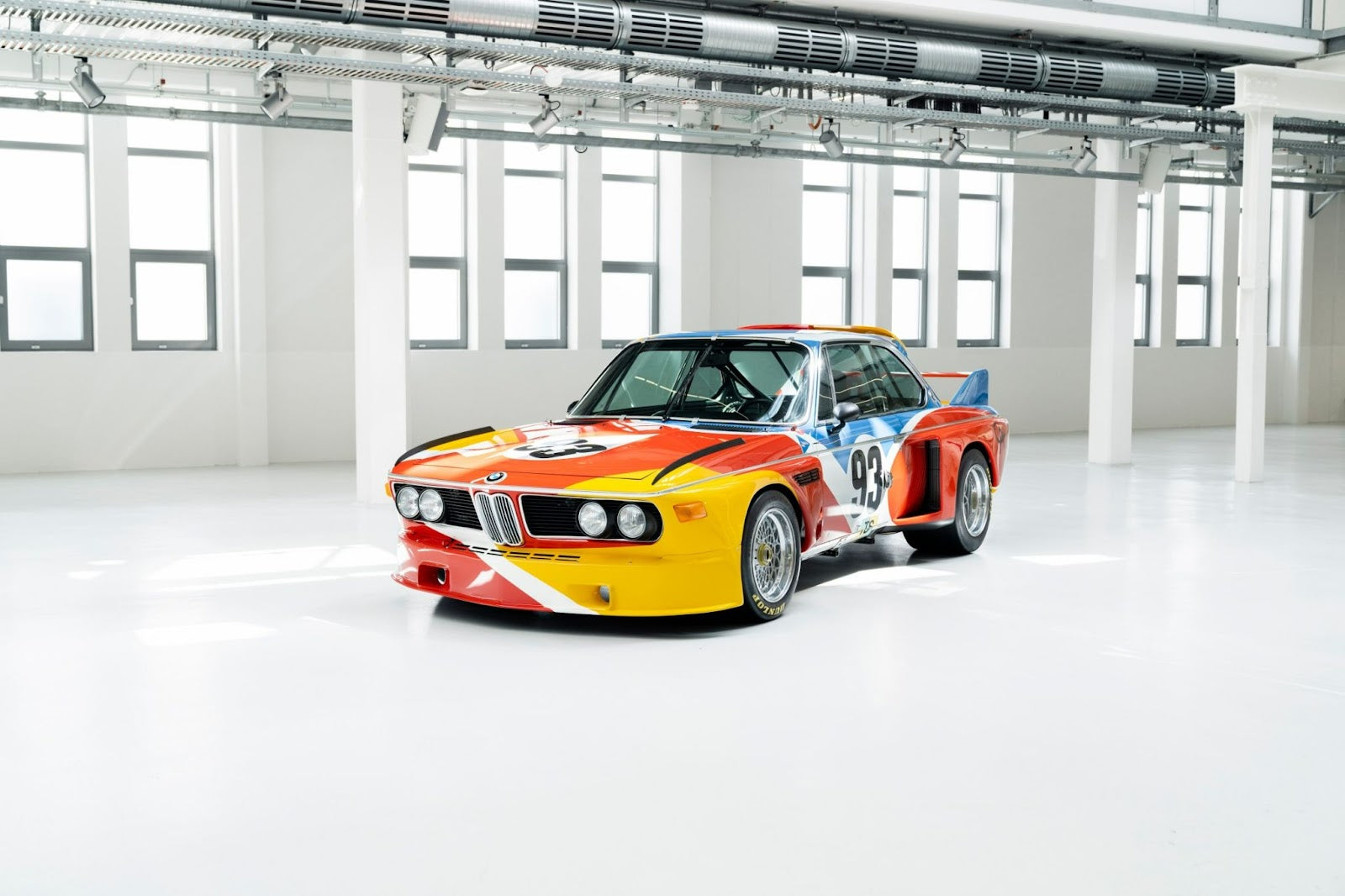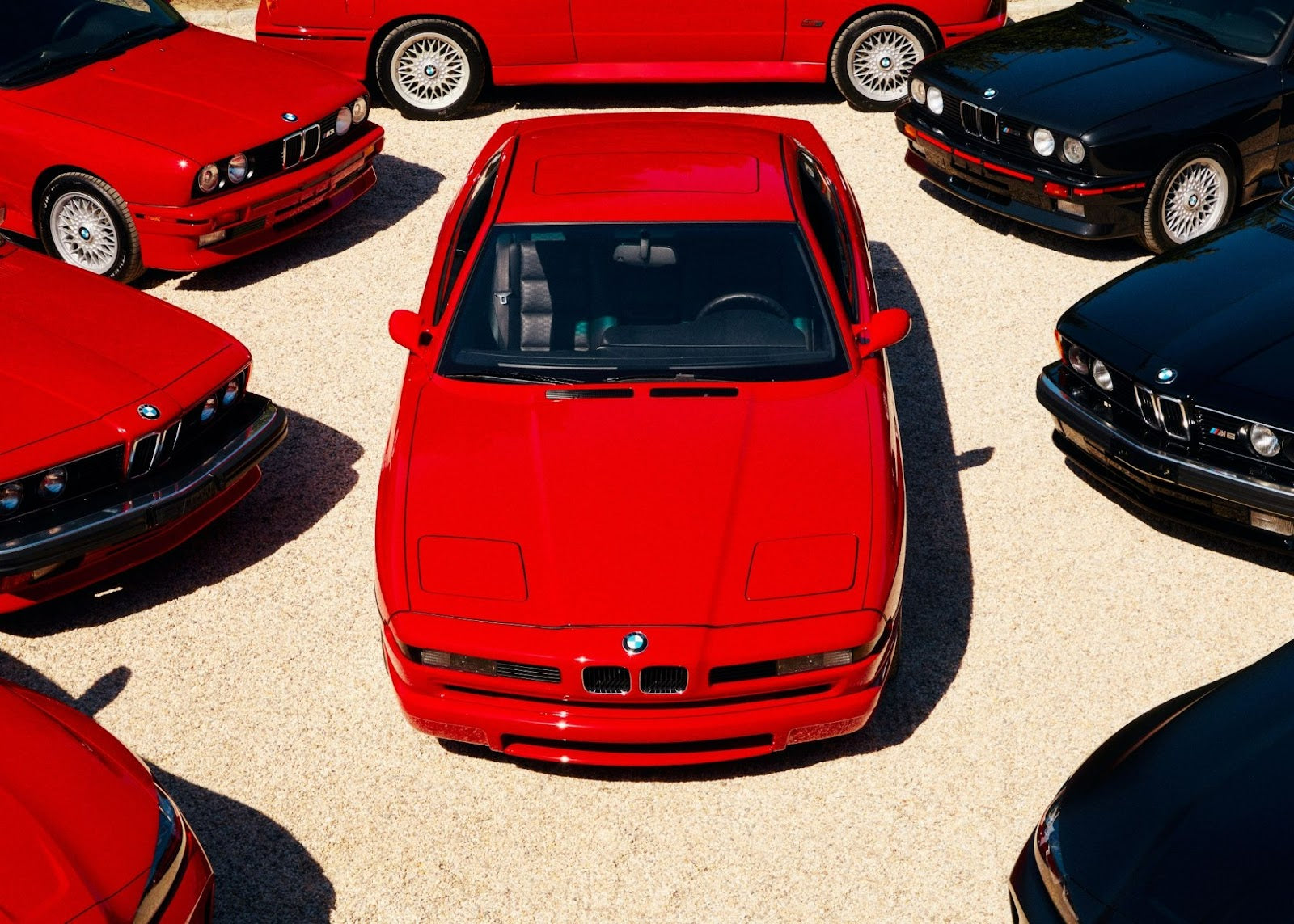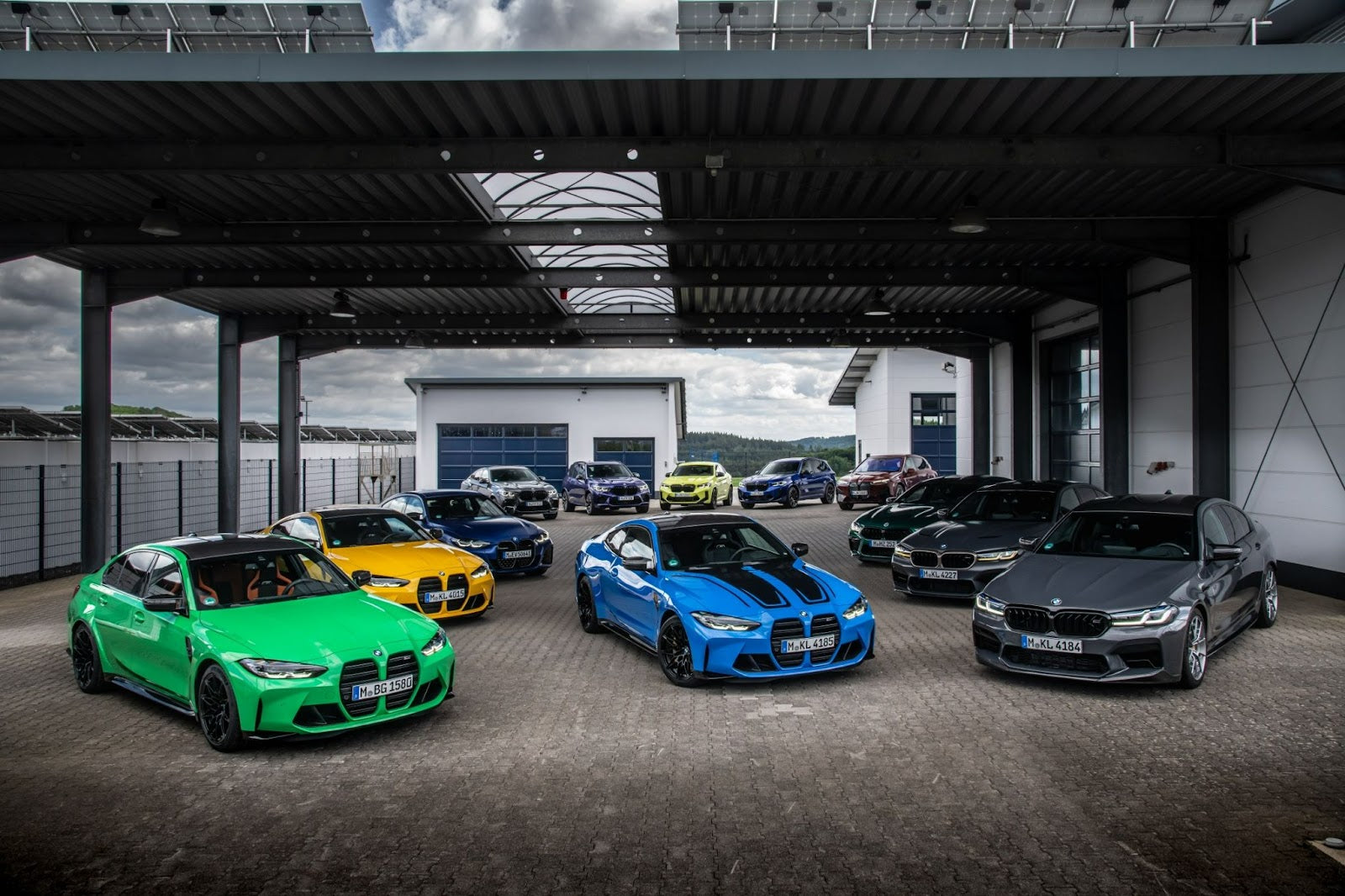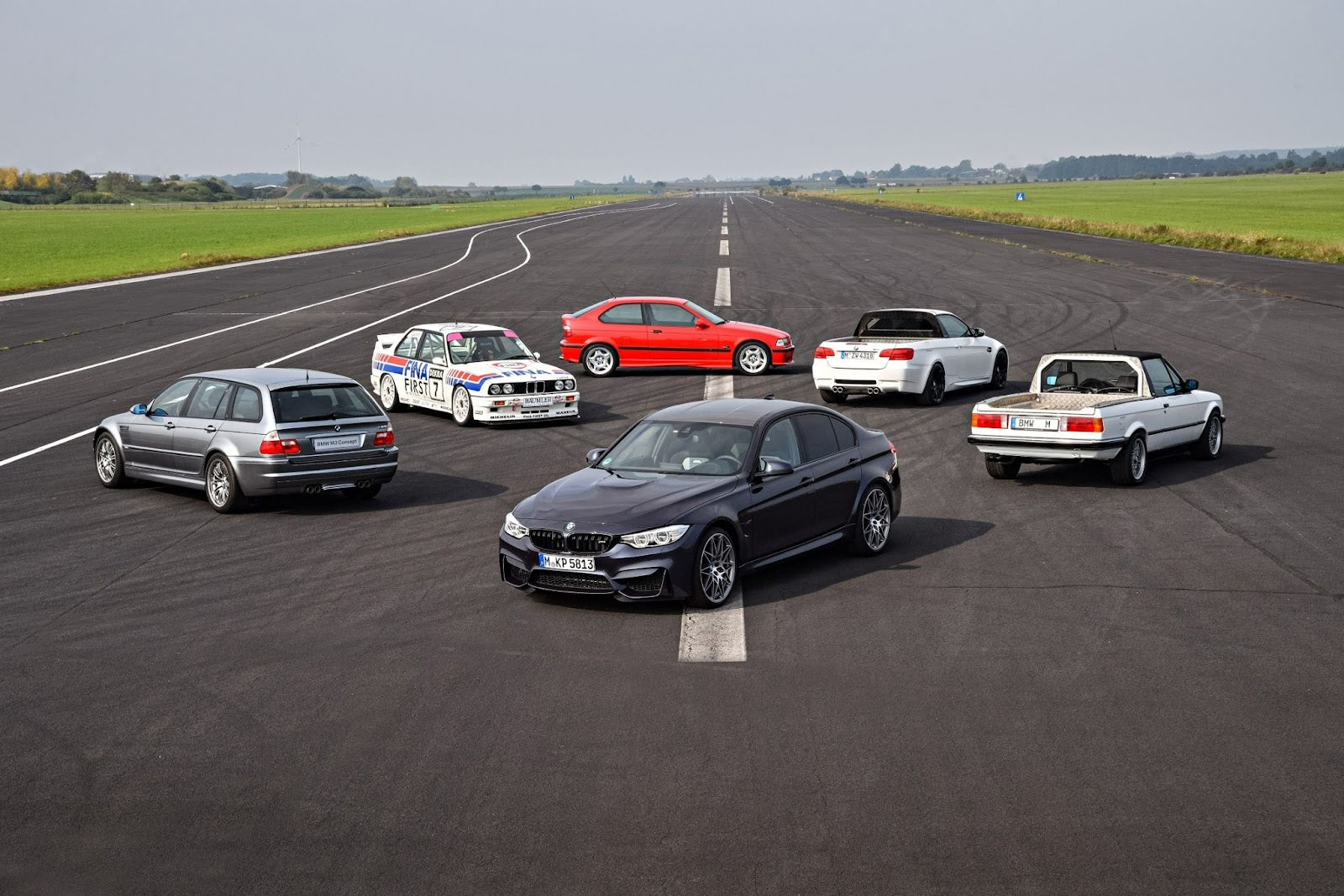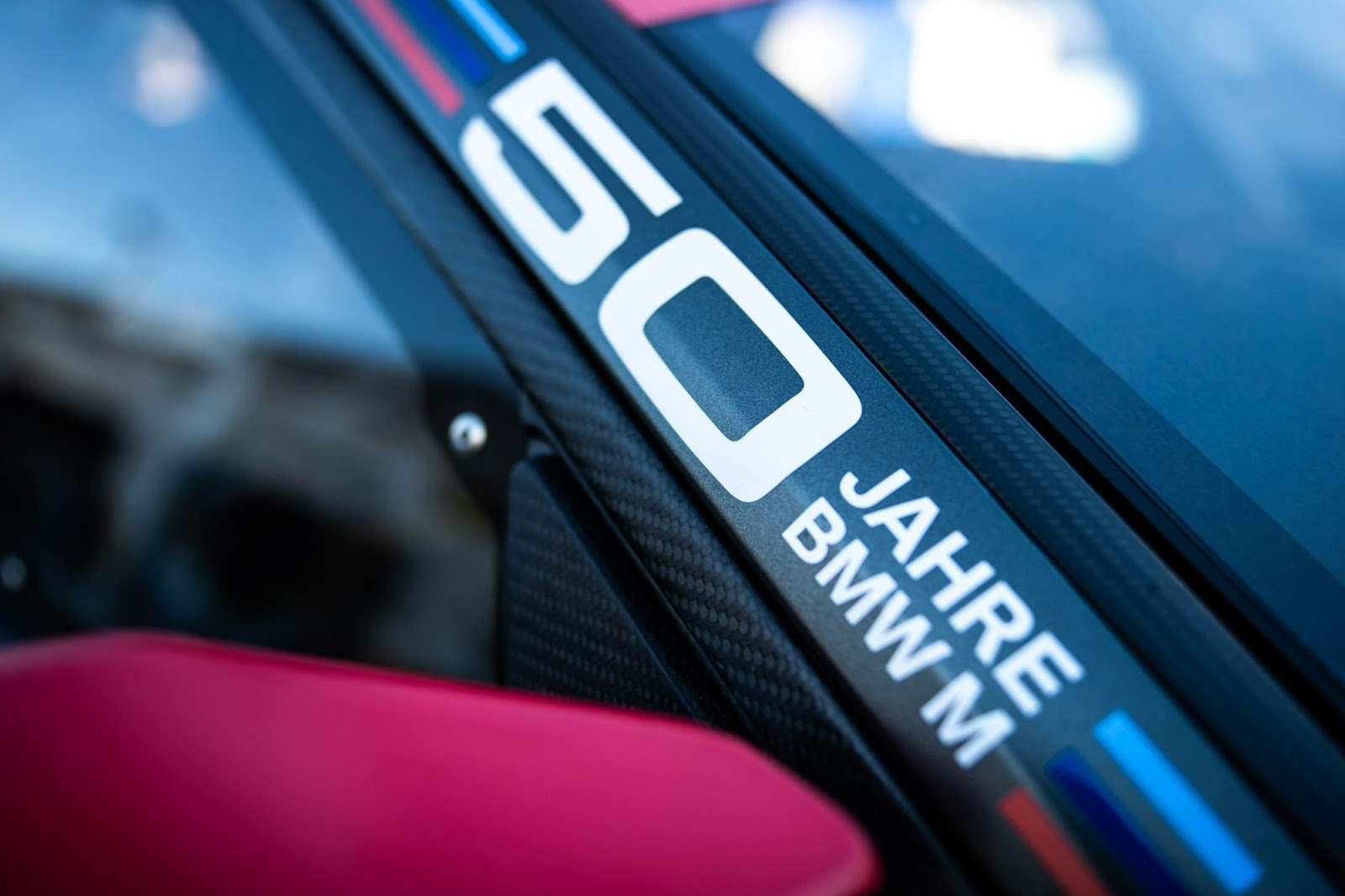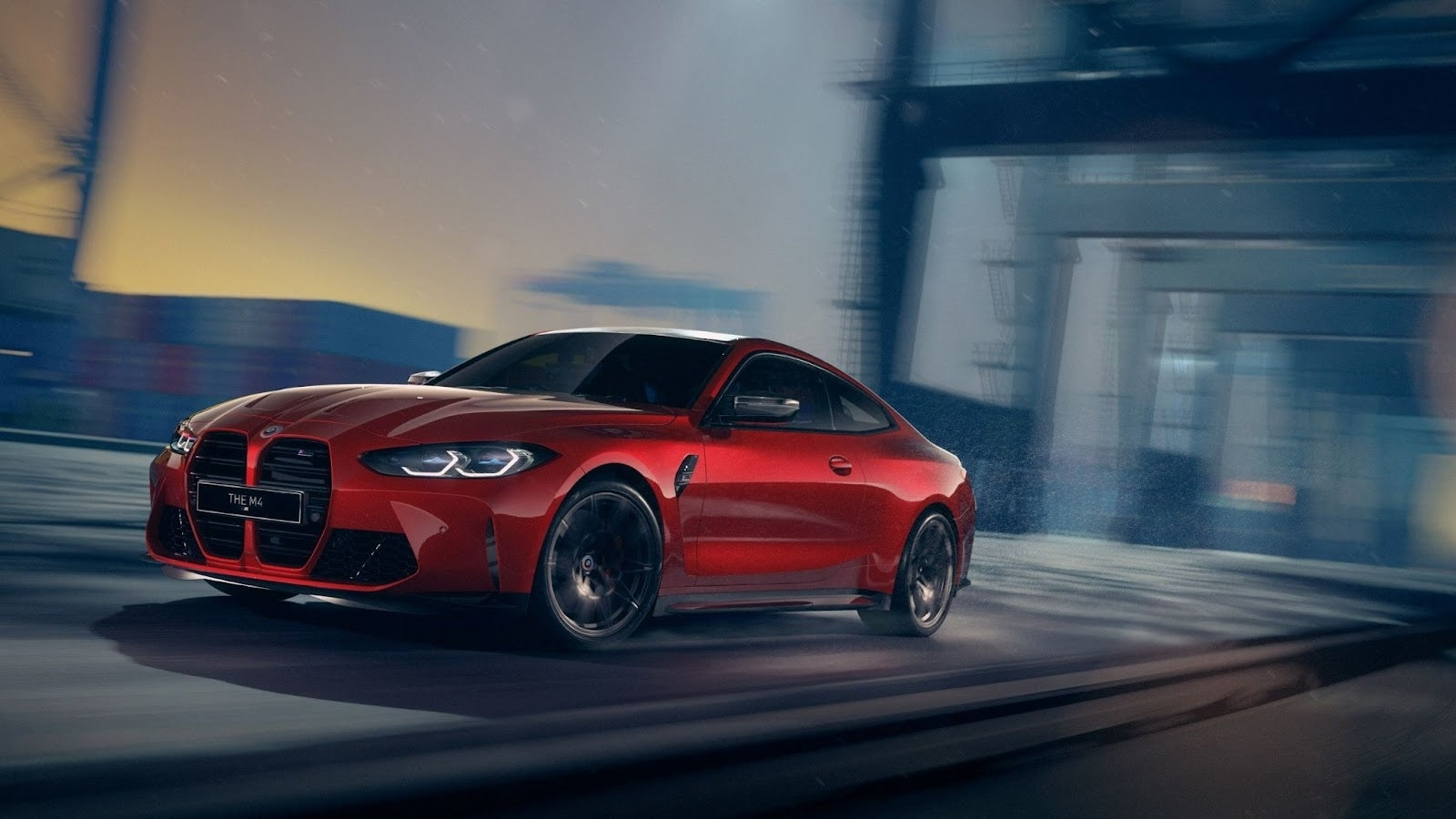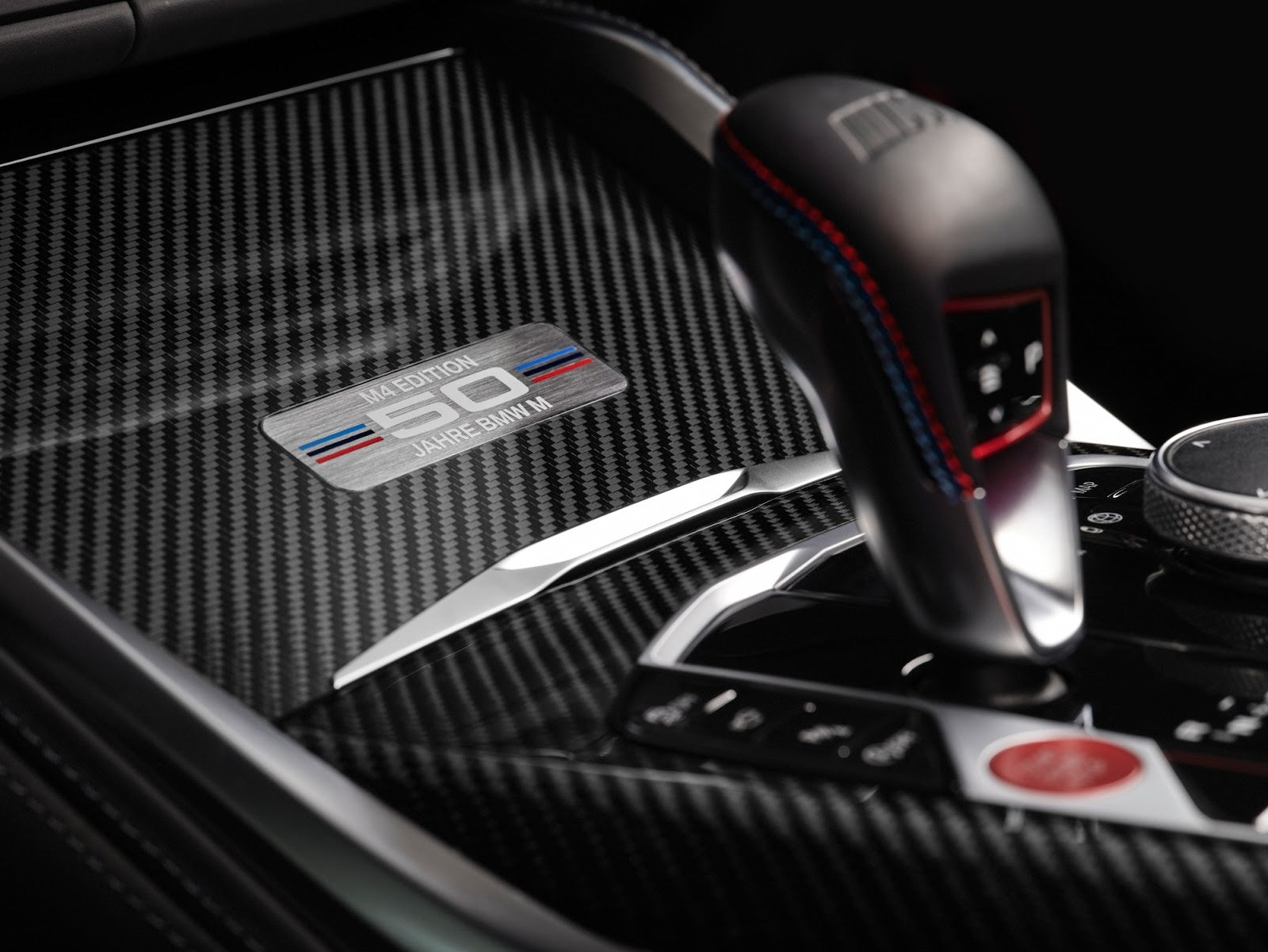At the end of the 1960s, there was a spirit of optimism at Bayerische Motoren Werke (BMW). The new, young management team wanted to make the brand bigger and invested in the aptly named BMW “four-cylinder”, the high-rise building for the new head office. The brand was to be given further impetus with the founding of its own sports car forge.
In the world of sports cars, the letter S is reserved for Audi, the letter R for Volvo, the letter F for Lexus, and the letter N belongs to Hyundai. But BMW was the first to laconically name its fastest models with the letter M. BMW Motorsport, or the BMW M department as it is known today, began its history in 1972 with just 35 employees.
The colors are also magical and still mark the affiliation with BMW's exceptional sporting talents: blue, red and violet. Blue symbolizes belonging to BMW, red stands for racing and
violet is the symbiosis of these two colors.
The Beginning
It was a Wednesday in the early 1970s when a piece of automotive history was written. 50 years ago, on May 24, 1972, the articles of association for “BMW Motorsport GmbH” were signed. When what is now BMW M GmbH settled in Munich, Germany – on Daimler street of all places – no one could have guessed what would become of it half a century later. The automobile piece has become a success story, that much can be said.
Initially, the focus of BMW Motorsport GmbH was solely on the successful establishment of the BMW brand in motorsport and racing. They didn’t plan on making road cars because vehicles made for the road needed approval from authorities for homologation purposes and therefore rules applied. However, there was always a demand for “racing cars for the road”.
As the name suggested, the Motorsport GmbH was up for the job and their first task was to take care of the ever-stylish BMW 3.0 CSL. It was presented after a short development period. Initially still with two-valve technology, a short time later the first four-valve 6-cylinder engine was used by BMW.
In addition to the performance-enhanced unit, the BMW 3.0 CSL was manufactured with lightweight construction. That assured tremendous success on the road but it didn’t even stop there. With almost no modification, BMW 3.0 CSL won the European Championship 6 times.
It was another six years before the public was offered anything more than just a racing car - the BMW M1 co-launched with Lamborghini. Still, it didn't manage to evade racing because it was still a race car with number plates.
BMW M3 & BMW M5
After a few more years, masterpieces such as the M535i E12, the M 635 CSi E24 and the M535i E28 were devoted more to the masses. But that was before the never-ending story of the BMW M5 and BMW M3 began.
BMW M5
The M5 E28 debuted in 1985. It is often confused with the M535i, which has the same body but is weaker (290 hp vs. 185 hp) and was built more than four times less frequently (2,191 units vs. 9,483 units). Aside from the M1, this is the first BMW model where displacement wasn't specified.
It was outrageous to even think about it but the four-door sedan was more powerful than the Ferrari 328 with V8 at the time. The drivers' blood boiled in their veins, knowing how much this BMW had in common with the Group 5 engines, which could produce 900 hp. And it was 11% cheaper than the Ferrari.
The first M5 models were hand built on the 535i chassis and the M88/3 engine was carried over from the M1. This is how the fastest production sedan of the time came about. The European and South African versions did not feature a catalytic converter that limited power to 256 hp, which was installed on the US and Canadian models.
Interestingly, BMW didn't expect demand for the car to exceed 2,000 units. Due to growing volume, some M5 buyers sued the company for producing more cars than advertised. They even received $4,000 in compensation.
Auto experts have found that the M5 E28 drives like a true classic rear-wheel drive car - it's stretchy yet easy to corner - and it prides itself on being one. By today's standards, it's impressive how soft the M5 E28's suspension is, with the weakest point being the brakes.
BMW M3
Although the BMW M3 is based on the 3-series, only four body parts have remained the same: the hood, the roof, the sunroof and the insides of the doors. Everything else has been redesigned to improve the car's aerodynamics. In addition to numerous improvements to the chassis, the limited-slip differential (LSD) was introduced, but the coupe only weighed 2568 lbs.
In the period 1986-1991, 17,184 coupes and only 786 convertibles were produced. The free-revving 2.3-liter engine was offered in various modifications (195 hp, 200 hp and 215 hp), and there was also a 2.5-liter Sport Evolution version with 238 hp, of which 600 units were produced in 1990.
It's the only M-Series to have a four-cylinder engine. All subsequent M3 models hid a 6 or V8 engine under the hood. But the M3 E30's modest cylinder count didn't stop it from becoming the M-Series' greatest legend.
Many car professionals highlighted the unusual feature of the M3 E30 - the rear-wheel drive turned out to be as safe as if the car had front-wheel drive. The excellent driveability and reliability were probably the main reasons for the success of the M3 E30.
With victories in circuit championships in various countries, including the 1987 Tour de Corse, and various 24-hour races, BMW helped create the image of a dominant car that later generations had to acknowledge as one of the top levels. Many events have voted the M3 E30 one of the best sports cars of all time.
50 Jahre Editions
The classic BMW M-Series cars are hard to find nowadays because they are a thing of the past. The future is electric: Because BMW intends to sell half of all models with an electric drive by 2030, future model generations such as the upcoming 5 Series (from autumn 2023) will probably also come in a corresponding sports version from BMW M. The first M3 Touring is also eagerly awaited.
Car manufacturers like to use such anniversaries as an opportunity to issue exclusive special models. This is of course also an option at M GmbH. They are pulling the curtain up for the 50 Years Edition based on the BMW M3 Sedan and the M4 Coupe, which is characterized by special design and equipment features. They are called the “50 Jahre”, 50 years in German.
The Design of BMW M4 50 Jahre
There are five different colors to choose from for the BMW M4 in the 50 Years Edition: carbon black, Macao blue, Brands Hatch grey, Imola red and San Marino blue. The wheels also have a decisive influence on the exterior appearance. The 19-inch front and 20-inch forged wheels in double-spoke design are available in the shades of matt orbit gray and matt gold bronze.
Anniversary insignia can also be found in the interior of the BMW M4 in the 50 Years Edition. These include door sills that bear the lettering "M4 Edition 50 Jahre BMW M" and a metal plaque on the center console. In addition, corresponding markings on the headrests indicate the special status of these M models. They can be found on both the standard M sport seats and the optional carbon bucket seats.
The Design of BMW M3 50 Jahre
Of course, the BMW M3 50 Years Edition available in the USA and Canada also gets such interior applications, with the rear passengers also benefiting here. Stripes in the colors of M GmbH can be seen on their outer headrests: violet, blue as well as red.
There are special door sill trims at the front and rear, with the side stripes being somewhat more compact due to the narrower entrances. In addition, the seats have a special seam pattern – here too, regardless of whether the standard or option seats are installed. A metal plaque on the cupholder cover of the center console bears the inscription "M3 Edition 50 Jahre BMW M" and the reference to the limitation (1/500).
The exterior colors for the BMW M3 50 Years Edition are vermilion, techno violet, Interlagos blue and fire orange as well as lime rock grey. In contrast to the M4, the rims are only available in one color, namely orbit gray matt.
For the looks, the special M3 receives selected BMW M Performance Parts. These include the front splitter and rear spoiler in carbon as well as the tailpipe trims, which present a material mix of carbon and titanium.
The Power
When it comes to driving power, all customers of the BMW M3 and M4 in the 50 Years Edition are spoiled for choice. The special models are available with both the 480 and 510 hp six-cylinder twin-turbo engines, which means that specifications with manual six- or automatic eight-speed transmission and rear or four-wheel drive are also possible.
CONCLUSION
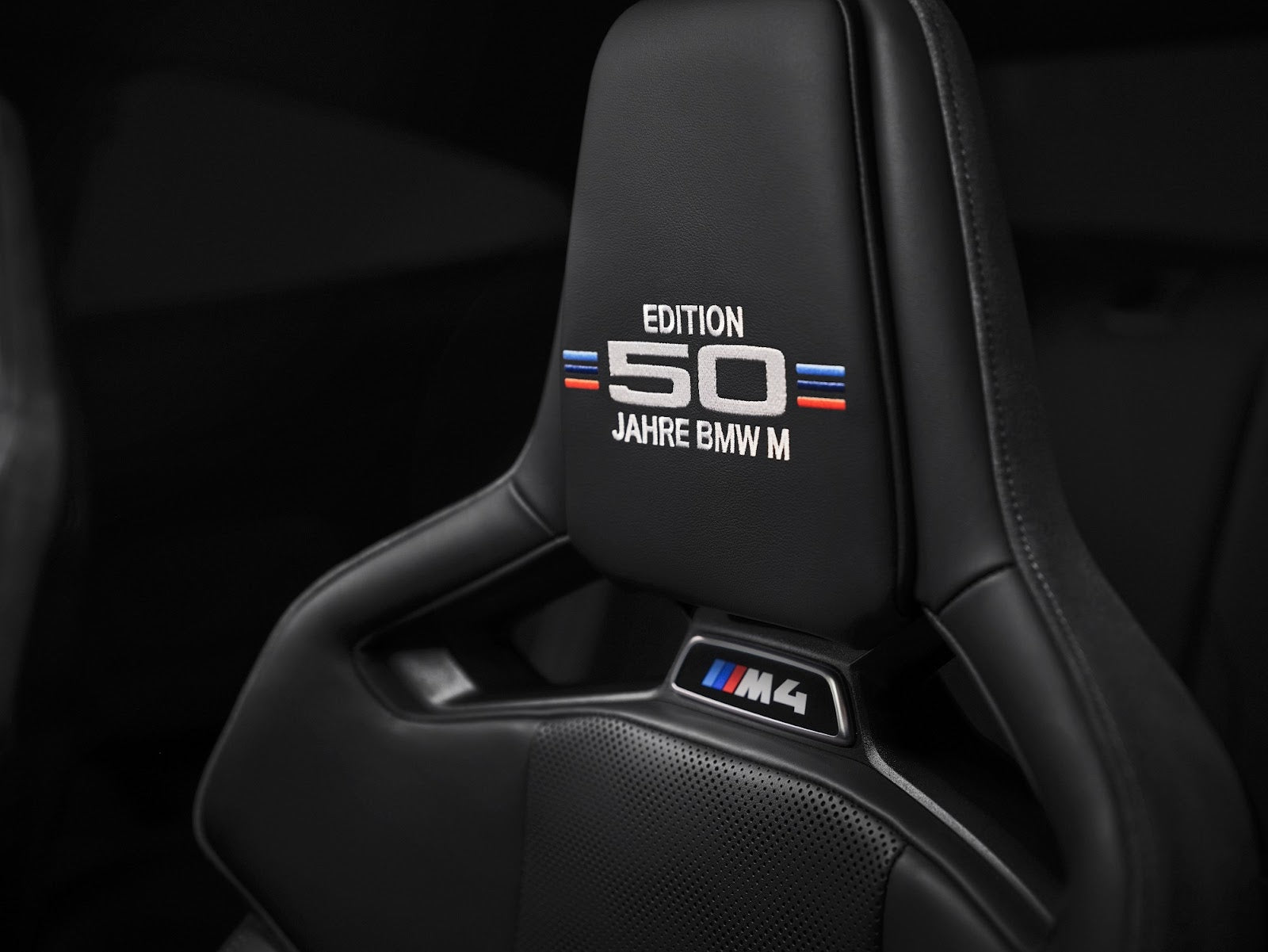
BMW M GmbH is celebrating its anniversary with 2 special models based on the BMW M3 and M4, although the exact specification varies slightly depending on the market and region. The cars are likely to be of particular interest to collectors: they are limited and will therefore certainly be in particularly high demand in the future, which should lead to a significant increase in value.
These cars are going to become legends at some point so if you want to protect your investment, you will need some protection against the environment. For all your protection equipment needs, we recommend Coverking. They are the best in the business and always know what they are doing. The company digitally scans each vehicle available on the market with the latest technology.
The ability to scan allows them to create the best custom-fitting equipment possible as soon as a new model is released. So, you can be sure that they will be the first to carry protective equipment for the Mercedes-AMG S63 E Performance as soon as it comes out.
Coverking is also the official protective equipment partner of most automotive manufacturers. Check out their catalog and find out what they can do for you and your vehicle.
Resources
- https://www.press.bmwgroup.com/usa/
- https://www.bmw-m.com/de/topics/50-jahre-bmw-m.html
- https://www.bmwgroup-classic.com/de/historie/50-jahre-bmw-m.html
- https://www.drive.com.au/news/2023-bmw-m4-edition-50-jahre-celebrates-five-decades-of-m
- https://www.autoexpress.co.uk/bmw/4-series/95721/new-bmw-m4-50-jahre-edition-unveiled
- https://robbreport.com/motors/cars/gallery/2023-bmw-m3-edition-50-jahre-bmw-m-in-photos-1234780414/
Tankut Basar
Tankut Basar is an ARA (American Rally Assoc.) Racing Driver and an FIA Bronze Category License Holder. His passion for driving began with karting like most racers. He started racing internationally at the age of 22. Tankut loves everything car-related and will keep enjoying the drive until the end.

